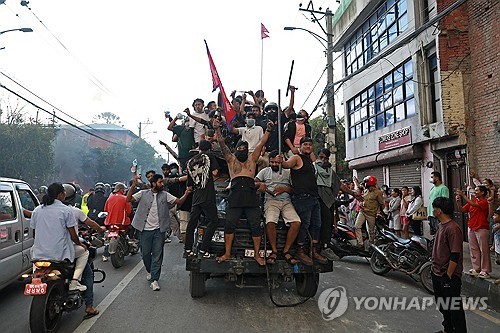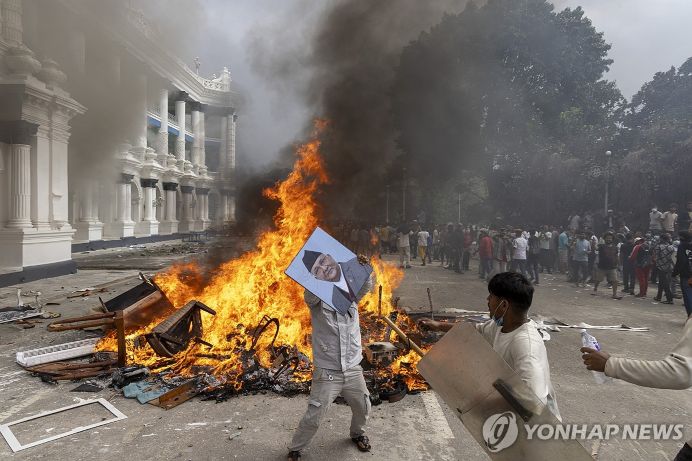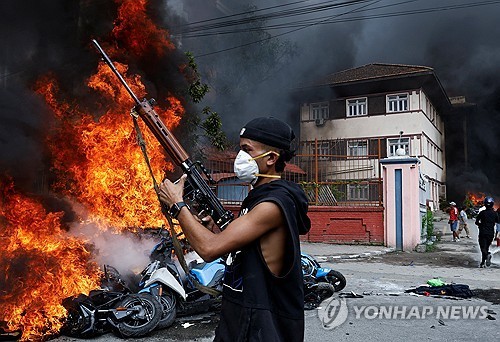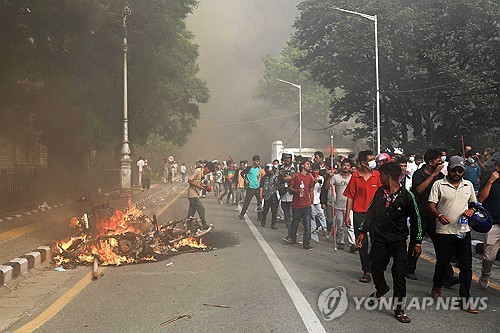Nepal’s Political Order Overturned in Just Two Days by Gen Z

By Bishnu Gautam,
Editor-in-Chief of the Rising Nepal
KATHMANDU: Uprising Nepal’s political landscape has undergone a dramatic shift in just two days. What began as protests against the government’s nationwide ban on social media on Monday quickly escalated into a nationwide uprising led by Generation Z (youth under 26).
The result: the Prime Minister resigned on Tuesday and went to hide together with his cabinet ministers. His whereabouts are not known. Major political leaders are now hiding in army barracks, fleeing from public outrage.

Until Monday, the coalition government of the Nepali Congress and the Communist Party of Nepal Unified Marxist-Leninist (CPN-UML), holding a two-thirds majority in parliament, was hailed as the “strongest regime.” But by Tuesday, Singha Durbar (the central secretariat), the Supreme Court, and the Parliament Building were engulfed in flames, symbolizing the collapse of power.
Prime Minister KP Sharma Oli dismissed demands from youth calling for an end to corruption and the lifting of the social media ban. His choice of violent crackdown left at least 21 people dead, sparking nationwide fury. Students and citizens marched across the country, torching government offices, politicians’ residences, and even the presidential palace.
As the crisis escalated, Home Minister Ramesh Lekhak resigned. Yet, Oli resisted, instructing ministers not to quit and imposing a curfew. But public trust was already lost. Oli, along with former Prime Minister Sher Bahadur Deuba, Prachanda (Pushpa Kamal Dahal), and other senior leaders are now taking shelter in army facilities.
Deuba and his wife, Foreign Minister Arzu Rana, were attacked by an enraged mob before being rescued by police; their home was reduced to ashes. By Wednesday morning, the Nepali Army had seized control of Kathmandu and is now at the center of efforts to stabilize the situation.
A senior journalist from a leading Nepali media outlet reported, “Not only the government but the entire system has collapsed. All police posts, supermarkets, and even the Chandragiri cable car of Kathmandu have been burned down.”

Currently, the army is holding talks with representatives of Gen Z to appoint an interim Prime Minister, who will oversee general elections within six months. Parliament has not yet been dissolved, but political consensus on a transitional leadership is urgently needed.
Former Chief Justice Sushila Karki is widely projected as the leading candidate, while Kathmandu Mayor Balen Shah and Dharan Mayor Harka Sampang are also being considered. However, divisions remain within the Gen Z movement over the next leader.
For now, government offices and airports remain under blockade, while the protest movement insists on prioritizing safety and non-violence. Nepal, which emerged from a decade-long civil war and painstakingly drafted a new constitution between 2008 and 2015, now faces another defining moment.

This uprising is more than a collapse of a government—it has shaken the foundations of Nepal’s political system. Whether it ushers in a new chapter of democracy and reform, or sinks the nation deeper into uncertainty, will depend on how swiftly and wisely the interim leadership is chosen. The world is now watching as Nepal stands at the crossroads of crisis and renewal.



